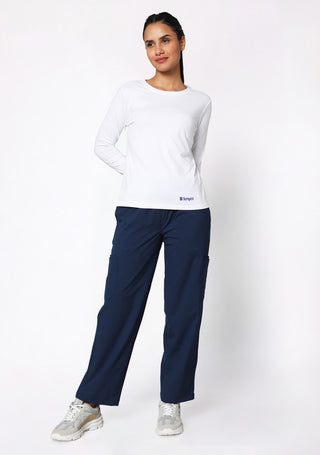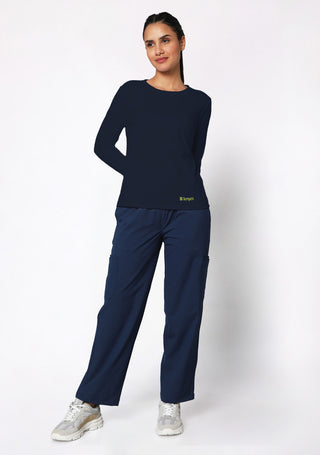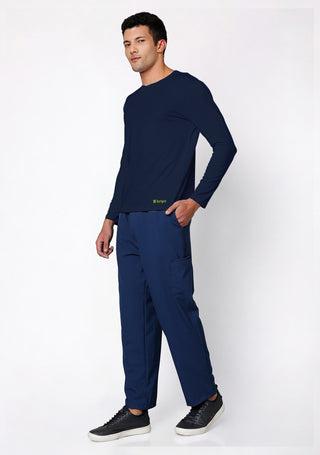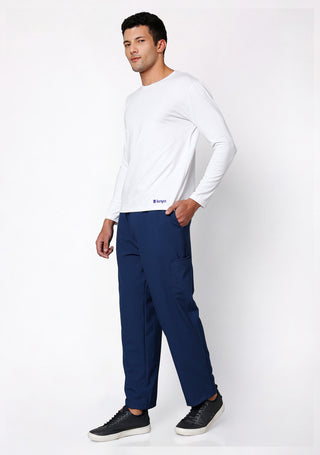When you think of healthcare professionals, the first image that comes to mind is often of individuals in crisp, colorful uniforms called scrubs. These practical garments have become synonymous with medical settings, but have you ever wondered why they’re called "scrubs"? This question takes us back to their origins, purpose, and evolution. Let’s dive into the fascinating story behind this ubiquitous attire. From their humble beginnings as simple, utilitarian clothing to their modern-day style and functionality, scrubs have transformed into an essential part of healthcare culture. Whether you're a doctor, nurse, or medical technician, the story behind your scrubs is a reflection of the healthcare profession's growth and adaptability.
Find the best white lab coat here
The Origin of the Name "Scrubs"
The term "scrubs" originates from the highly sanitized environments where these uniforms were first used—particularly in operating rooms. Surgeons and their assistants undergo a meticulous handwashing process called “scrubbing in” before entering these sterile spaces. This rigorous preparation was essential to minimize the risk of infection. Over time, the uniforms worn in these clean, “scrubbed” environments became known as scrubs.
Initially, scrubs were simple, functional, and designed for surgical teams. Their clean design ensured they were easy to sterilize and maintained the hygienic standards required in operating rooms. While their usage has since expanded to a broader range of healthcare settings, the name remains a nod to their surgical roots.
Evolution of Scrubs
From White Dresses to Functional Uniforms
Before scrubs, nurses and doctors typically wore white uniforms symbolizing cleanliness and professionalism. However, these outfits were impractical for modern medical duties. The introduction of scrubs in the mid-20th century marked a shift towards functionality. Their unisex design and practicality made them suitable for the demanding tasks of healthcare workers.
Modern Scrubs: Beyond the Operating Room
Today, scrubs are not limited to surgical teams. Nurses, technicians, and even administrative staff in medical facilities wear them. They’ve become a universal uniform in healthcare, blending comfort, hygiene, and identification. While their primary purpose remains functional, modern scrubs also reflect individuality and professionalism.
Key Features and Benefits of Scrubs
- Practicality: Scrubs are designed for movement and comfort. They’re lightweight, breathable, and equipped with functional pockets for carrying essential tools like pens, notepads, or medical instruments.
- Hygiene and Safety: Made from materials that withstand high-temperature laundering, scrubs ensure that contaminants and germs are effectively removed. Some scrubs also come with antimicrobial and moisture-wicking properties.
- Identification: Many hospitals use color-coded scrubs to distinguish roles and departments. For example, blue might signify nurses, while green could indicate surgeons. This system enhances organization and communication in busy healthcare settings.
- Durability: Scrubs are crafted to endure long shifts and frequent washing. Reinforced seams and high-quality fabrics ensure they stand the test of time.
Check out Navy Blue Scrubs for Mens
The Role of Scrubs in Modern Healthcare
Scrubs are more than just a uniform; they symbolize the professionalism and dedication of healthcare workers. In bustling medical environments, they:
- Create a visual distinction between staff and patients.
- Foster trust among patients by projecting cleanliness and care.
- Serve as a protective barrier against bodily fluids and infectious agents.
Choosing the Perfect Scrubs
If you’re in the market for scrubs, consider the following factors:
- Material: Opt for fabrics like polyester blends or those with added spandex for flexibility. Cotton scrubs are soft but may require extra care.
- Fit: The right fit ensures comfort and mobility. Many brands offer tailored and relaxed-fit options to cater to individual preferences.
- Color and Style: Check your workplace’s dress code. If there’s flexibility, explore colors and patterns that reflect your personality while maintaining professionalism.
- Additional Features: Look for scrubs with reinforced pockets, antimicrobial properties, and easy-care fabrics to make your workday smoother.
The Role of KNYA Scrubs in Shaping Modern Healthcare Uniforms
When considering the perfect scrub, brands like KNYA have set the standard for modern healthcare uniforms. Known for their innovative designs, KNYA scrubs prioritize comfort and durability, while also embracing modern aesthetics. Made from high-quality fabrics that offer breathability, flexibility, and easy maintenance, KNYA scrubs ensure healthcare professionals feel confident and comfortable throughout their long shifts. Their stylish options cater to both men and women, providing a wide range of colors, fits, and functional features, including antimicrobial properties and reinforced pockets.
So, the next time you put on your scrubs, take a moment to appreciate the rich history behind them and how they continue to evolve with the needs of modern healthcare. With trusted brands like KNYA leading the way, scrubs are not only a symbol of professionalism but also a reflection of how far we've come in ensuring that healthcare workers are well-equipped for their vital roles. After all, it's more than just a uniform—it's a piece of the story of healthcare itself.
Conclusion
In conclusion, scrubs have come a long way from their humble beginnings in the sterile world of surgery. They are now an iconic symbol of the healthcare profession, blending hygiene, comfort, and style. Whether you're wearing them as a doctor, nurse, or any other medical professional, scrubs serve as a reminder of the dedication and care that healthcare workers provide every day. So, the next time you put on your scrubs, take a moment to appreciate the rich history behind them and how they continue to evolve with the needs of modern healthcare. After all, it's more than just a uniform—it's a piece of the story of healthcare itself.





















































